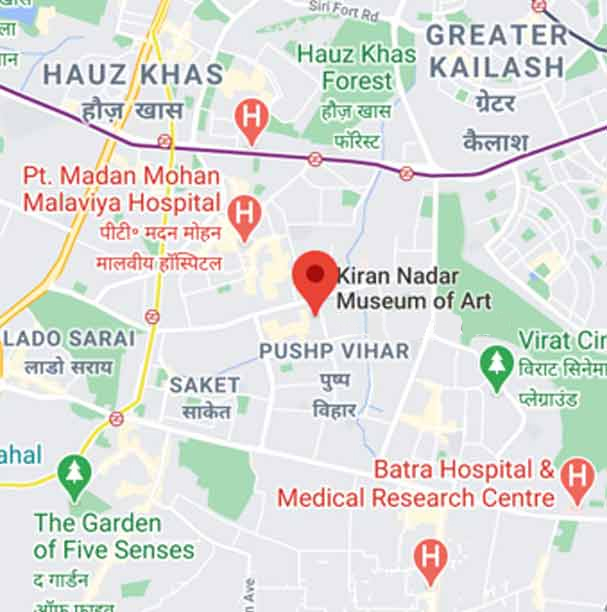- Home
- Musee Guimet, Nice, France
Musee Guimet, Nice, France
Nice, France

EARTH as HAVEN: Under The Canopy of Love
15 October 2017 - 15 January 2018
Curated by Roobina Karode
The recent project at Musee Guimet is one of the most enterprising undertakings by Jayashree Chakravarty, responding to the specificity of the site, setting and scale, as well as to the circular plan of the rotunda. In the transformed ambience of the Carte Blanche space, one encounters a large, suspended paper structure, an imaginary form inspired by the tiny wasp-house/cocoon, but built in massive proportions, making it possible for viewers to enter into and experience her 'insect-world'. Bare from the outside, the canopy quite like caves and natural shelters, is inviting with its sensual earthiness and dark layered interior, which unfolds hidden mysteries on a closer look. The delicate ribbed armature of this form echoes the shape of shanties scattered over the city of Kolkata, and also brings to mind the slender ribbed-vaults of Gothic architecture. Hanging above the ground, it appears like a slow crawling form, with the partly visible feet of visitors conceived as an inherent part of the insect-form. The seventeen large soaring paper scrolls displayed around as a continuous curtain, transform the space of the rotunda, creating an immersive environment for a deeper engagement.
Earth as Haven rhymes with and alludes to heaven, and perhaps to a utopian desire, but the artist here is more significantly immersed in retrieving the earth as a place of refuge and shelter for all visible and invisible forms of life that inhabit its soil, air, water and sunlight and enjoy its fecundity. Referring to the interiority of wombs, cocoons and nests, it is unadorned from the outside while the inside unfolds a world inhabited by tiny 'insect-forms' like beetles, flies, ants and glow-worms that sparkle and illuminate the dark core of the earth. A play of camouflage, quite like in nature offers sudden moments of surprise and discovery, often challenging the naked eye, demanding a microscopic investigation. The aroma of the earth, the palpable sensuousness of the surface, the sense of silence, the radiance of the sparkling insects-bodies, all add to the strange beauty of this make-believe haven.
Other Exhibitions

visions of interiority: interrogating the male body - A RETROSPECTIVE (1963-2013)
14 October 2014 - 1 March 2015

You can’t Keep Acid in a Paper Bag - A RETROSPECTIVE (1969 - 2014) in three chapters
26 September 2014 - 21 December 2014

A view to infinity - A Retrospective (1937-1990) Part of Difficult Loves
31 January 2013 - 8 December 2013

the dark loam: between memory and membrane - A RETROSPECTIVE (1930-2016)
24 August 2016 - 20 December 2016

The euphoria of being Himmat Shah A continuing journey across six decades
30 October 2017 - 15 December 2017

VIVAN SUNDARAM, A RETROSPECTIVE: FIFTY YEARS STEP INSIDE AND YOU ARE NO LONGER A STRANGER
9 February 2018 - 20 July 2018

Envisioning Asia, Gandhi and Mao in the photographs of Walter Bosshard
1 October 2018 - 31 October 2018

Kiran Nadar Museum of Art presents इस घट अंतर बाग-बगीचे | Haku Shah 1934-2019 Within this earthen vessel are bowers and groves
10 December 2019 - 8 January 2020

Right to laziness... no, strike that! Sidewalking with the man saying sorry
30 January 2020 - 10 April 2021

Line, beats and shadows – Ayesha Sultana, Prabhavathi Meppayil, Lala Rukh and Sumakshi Singh
30 January 2020 - 10 April 2021

Delhi Modern: The Architecture of Independent India seen through the eyes of Madan Mahatta
13 February 2020 - 28 February 2020

Around The Table : Conversations about Milestones, Memories, Mappings
5 November 2022 - 22 December 2022

Prussian Blue: A Serendipitous Colour that Altered the Trajectory of Art
19 September 2023 - 20 December 2023
_0.jpg)
Jayashree Chakravarty’s ‘Life will never be the same again’
19 September 2016 - 15 February 2017
Curated by Roobina Karode
Jayashree Chakravarty’s preoccupations and concerns in her art practice largely address the shrinking natural habitat and water bodies in ever-expanding Indian cities. She lives by herself in a rapidly urbanizing satellite neighbor town of Kolkata in Eastern India, where she watched the rich marshlands of Salt Lake, transform into 'Salt Lake City', now a congested residential neighborhood. Observing the uprooting of wild flowers and grass, some of them part of the local lore and known for their medicinal value, the consequent vanishing of the once abundant animal, vegetal and insect life around her have sharpened her sensibilities and perceptions to the irreparable in nature. Alluding to the cluttered environment of the city, her densely painted monumental canvases explode with excessive imagery, both gestural and visceral. They draw viewers into the vortex of unsettling landscapes that evoke spatial and temporal turbulence.
Her recent soaring installations with long suspended scrolls have nature as both subject and material. Instantly, we seem to encounter a maze created out of an overlay of painted and woven imagery, interlaced and secured between the skeins/skins of pasted paper and fabric. A closer look reveals petals, dry leaves, seeds, stems, roots and plant-remnants embedded into her multi-layered creations that cannot be experienced from any single vantage point. In contemporary times, where industrial materials and technology have opened up possibilities of more varied artistic and conceptual conquests, Jayashree’s hand-made organic forms point at the need to be closer to nature, seeking ways recuperating to recover the self and the world we live in. Through a poetic evocation in her recent exhibition titled ‘Life will never be the same’, Jayashree encapsulates many overlapping emotions and personal experiences. She acknowledges the inevitability of constant change, fundamental to life, and yet she accentuates the lamenting tone pushing forward the potency of the phrase, as if pained by an irreconcilable loss. Simultaneously she expresses a longing to be located in a time and space of a utopian past. Unpretentious and fiercely honest, Jayashree Charkravarty, has raised with utmost humility, the most pertinent question that we must all confront and reflect on– ‘how to live and let live’.
Other Exhibitions

visions of interiority: interrogating the male body - A RETROSPECTIVE (1963-2013)
14 October 2014 - 1 March 2015

You can’t Keep Acid in a Paper Bag - A RETROSPECTIVE (1969 - 2014) in three chapters
26 September 2014 - 21 December 2014

A view to infinity - A Retrospective (1937-1990) Part of Difficult Loves
31 January 2013 - 8 December 2013

the dark loam: between memory and membrane - A RETROSPECTIVE (1930-2016)
24 August 2016 - 20 December 2016

The euphoria of being Himmat Shah A continuing journey across six decades
30 October 2017 - 15 December 2017

VIVAN SUNDARAM, A RETROSPECTIVE: FIFTY YEARS STEP INSIDE AND YOU ARE NO LONGER A STRANGER
9 February 2018 - 20 July 2018

Envisioning Asia, Gandhi and Mao in the photographs of Walter Bosshard
1 October 2018 - 31 October 2018

Kiran Nadar Museum of Art presents इस घट अंतर बाग-बगीचे | Haku Shah 1934-2019 Within this earthen vessel are bowers and groves
10 December 2019 - 8 January 2020

Right to laziness... no, strike that! Sidewalking with the man saying sorry
30 January 2020 - 10 April 2021

Line, beats and shadows – Ayesha Sultana, Prabhavathi Meppayil, Lala Rukh and Sumakshi Singh
30 January 2020 - 10 April 2021

Delhi Modern: The Architecture of Independent India seen through the eyes of Madan Mahatta
13 February 2020 - 28 February 2020

Around The Table : Conversations about Milestones, Memories, Mappings
5 November 2022 - 22 December 2022

Prussian Blue: A Serendipitous Colour that Altered the Trajectory of Art
19 September 2023 - 20 December 2023

_0.jpg)
.jpg)
.jpg)

.jpg)
.jpg)
.jpg)
.jpg)
.jpg)
.jpg)





















.jpg)










.jpg)
























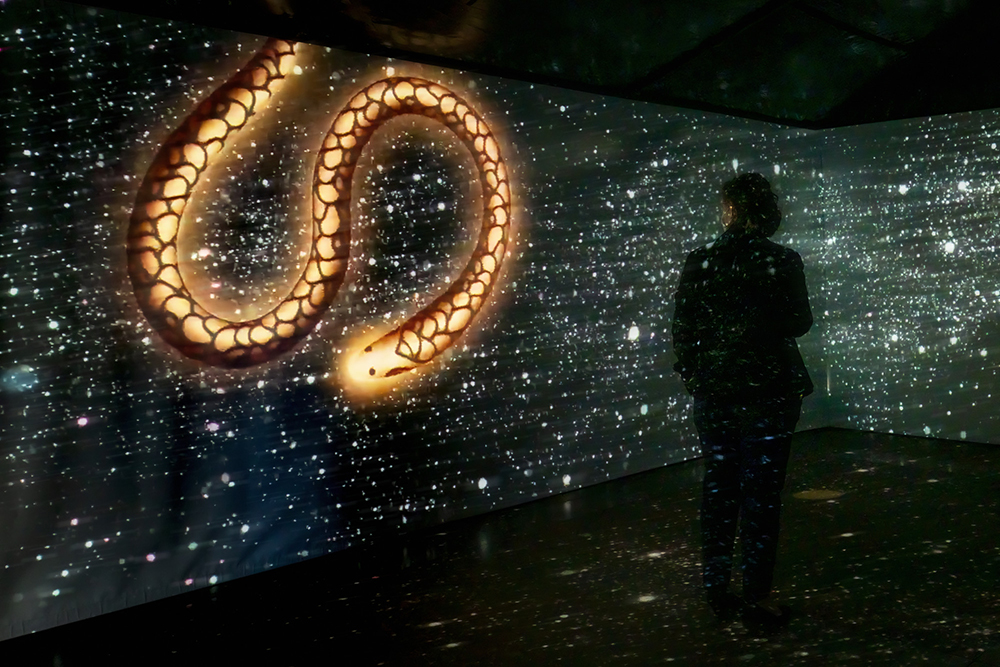
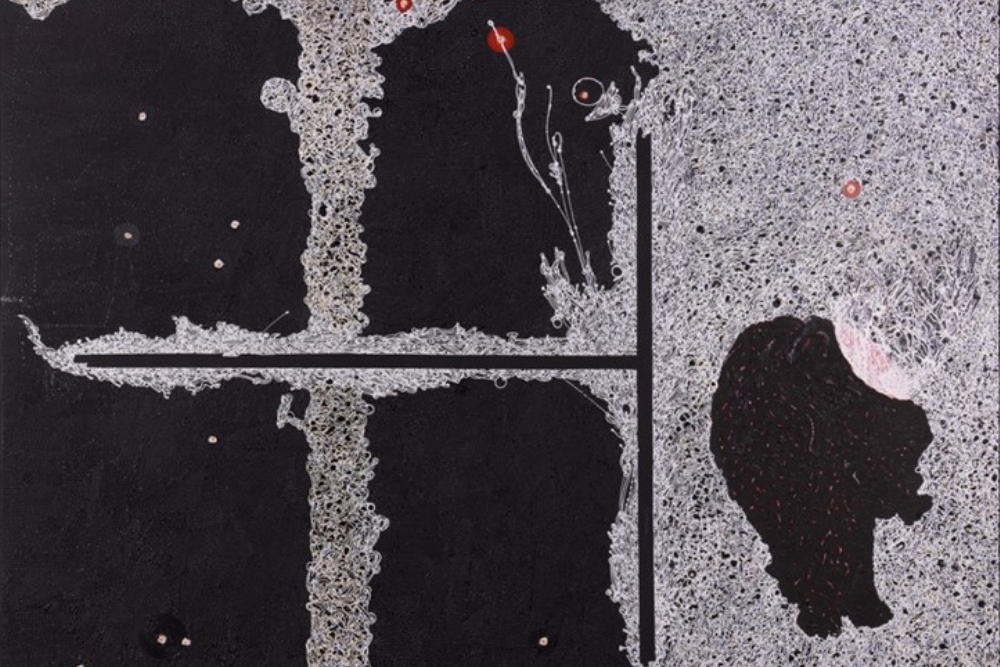
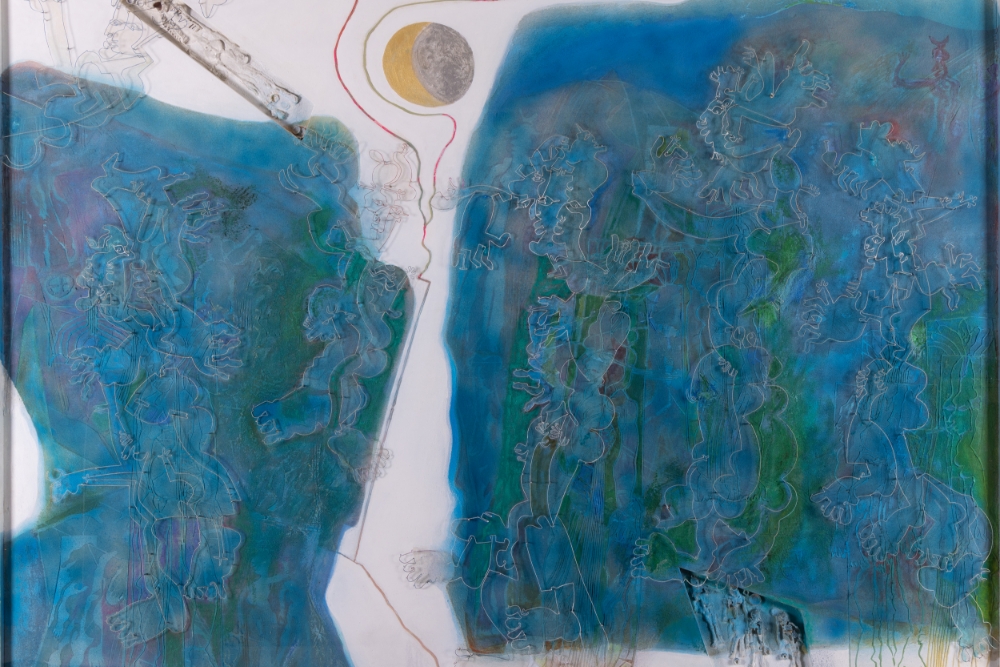
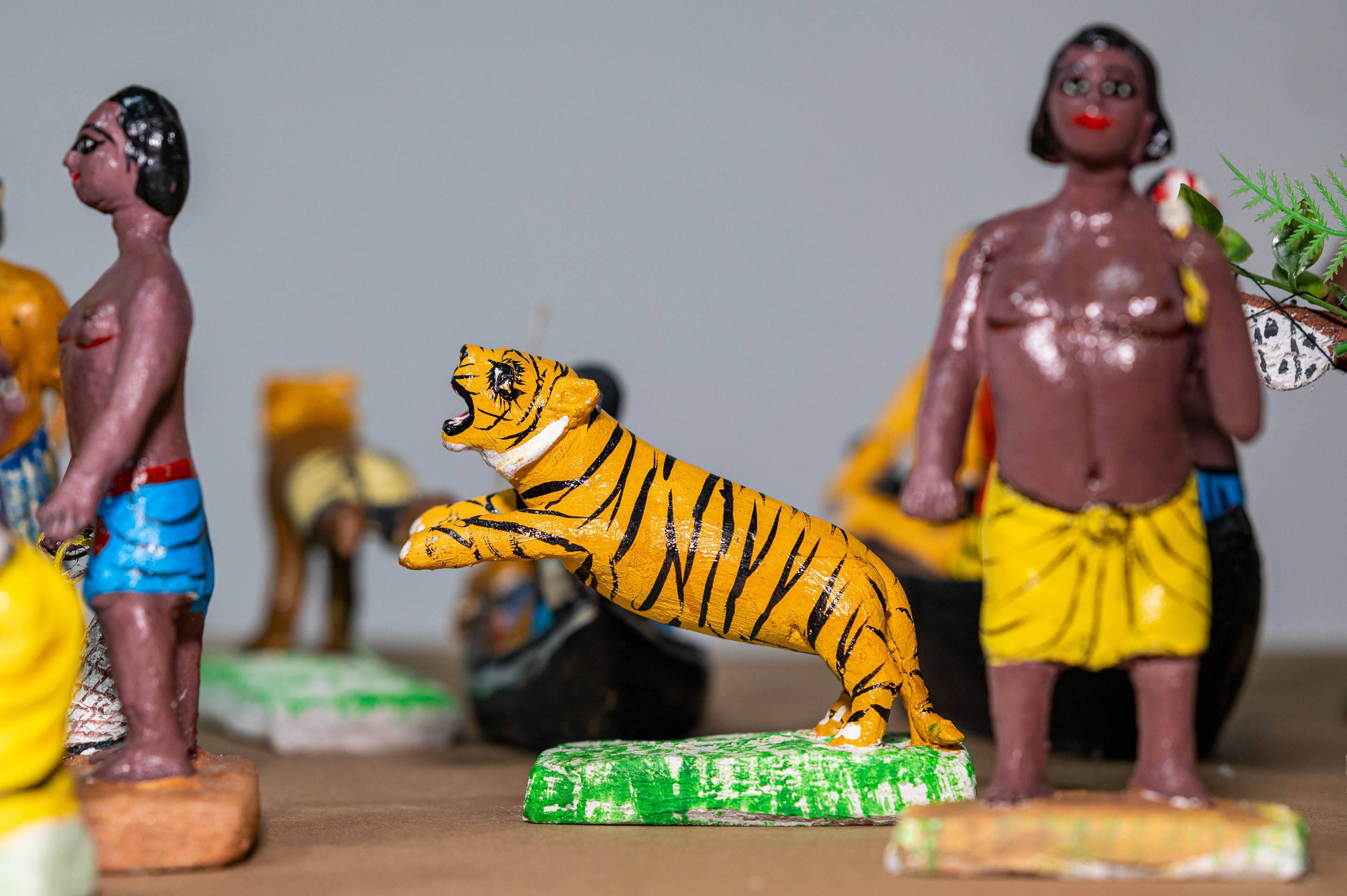

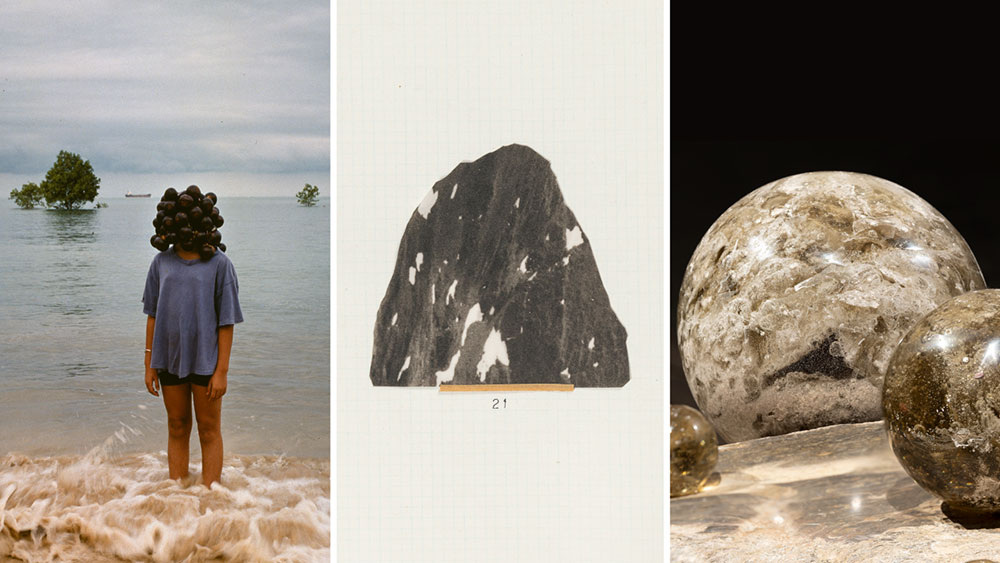

.png)














